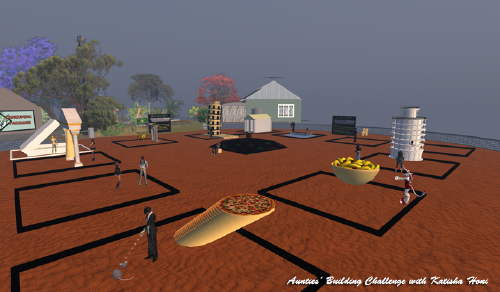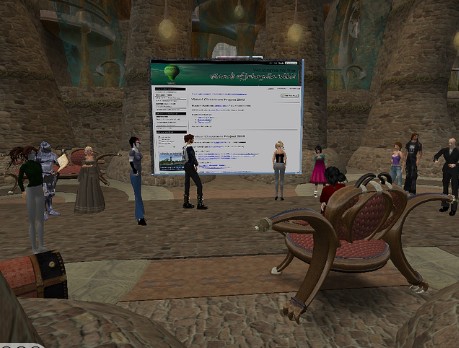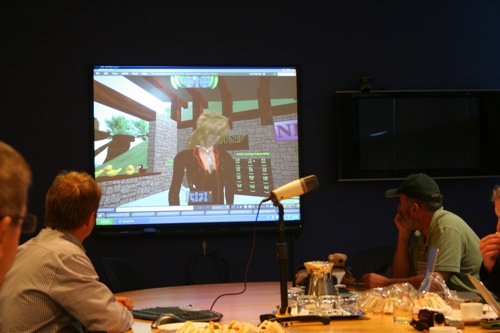1. The Virtual Worlds Research Discussion Group has another interesting session this week (thanks to Greg Wadley for the heads-up):
This week’s research discussion is hosted by Jeremy Kemp of San Jose State University. All researchers and educators are welcome. Jeremy will be talking about his dissertation research under the heading ‘How to Start Right: Lessons from a Second Life orientation for 1100 graduate students’.
For place/time details and slides, please see
http://vwresearchersgroup.pbwiki.com/Meeting-Schedule-and-Transcripts .
Abstract: ‘San Jose State University’s School of Library and Information Science is the largest of its kind in the world. Students starting the program in Fall 08 and Spring 09 completed a mandatory orientation including a section on Second Life. Most of them were able to create an avatar and visit the school’s island. Others completed a reading and quiz option. Kemp is surveying this large population and basing his dissertation on their feedback. This interactive session will ask the audience for feedback and ideas.’

2. If you haven’t had your fill of St Patrick’s Day, there’s still time to enjoy it in Second Life until the 21st March. It’s being hosted by Dublin in SL:
Celebrate St. Pat’s online in Dublin in Second Life. Four years and running, Saint Patrick’s Week in Virtual Reality features the Traditional St. Pat’s Day Parade in Not-So-Traditional Virtual Reality and All Day Street Parties at The Blarney Stone and Fibber Magees Night Club. New this year are Irish Writer’s Riot, celebrating great Irish literature, and South by Southwest Music Festival, streaming 18 UK artists live from Austin, Texas.
3. There’s still time to get involved with Second Life’s 2009 Relay for Life.
4. The folks at Clever Zebra have a brief but useful overview of the five open source virtual world platforms that have or are starting to make a mark.





Recent Comments